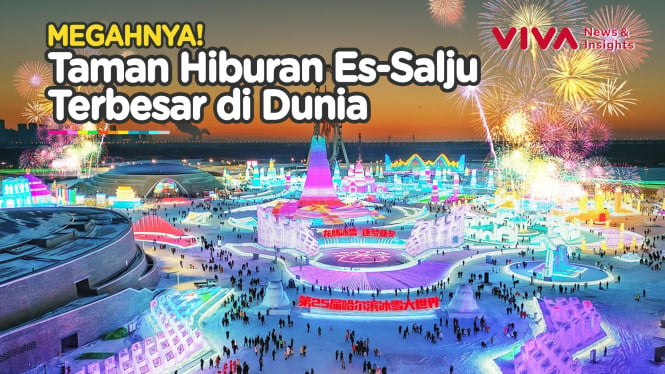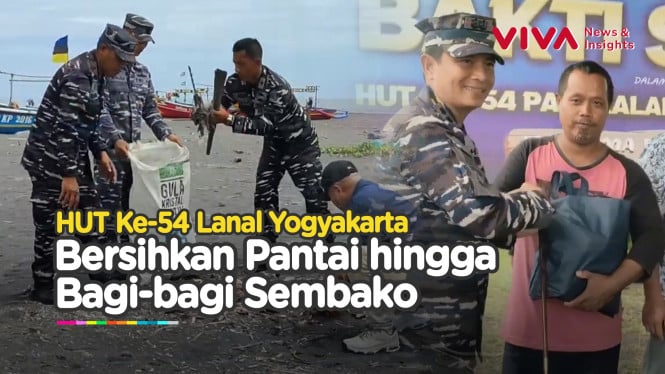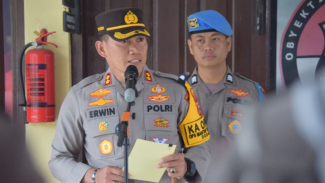The Important Facts about Tsunami, People Have to Know
- Pexels
VIVA – Tsunami happens because of the displacement of a significant volume of water. Tsunami is usually caused by volcanic eruptions and earthquakes and these natural disasters occur in the ocean or large lakes.
Tsunami occurs not as a single wave, but as several waves with strong currents. The water and energy that a tsunami contains can destroy buildings, houses, cars, power lines, and almost anything in its path.
Ilustrasi Tsunami
- SMS-Tsunami-Warning.com
Tsunami can also result in death which includes drowning and traumatic injury. The start of the tsunami started with a rumbling sound like a freight train or Boeing 747 taking off. Then a wall of water appeared, bringing with it a tremendous force that could easily and instantly flatten an entire structure.
Here are important facts about tsunami that are important to know. Learn how to prevent them, how Tsunami appears, overall history, and other useful information.
1. 80% of Tsunami Happens within the Pacific Ocean's "Ring of Fire"
About 80% of the tsunami happens in the Pacific Ring of Fire. This is an area where volcanoes are active and earthquakes occur frequently. The "Ring of Fire" includes areas such as North America, South America, Kamchatka in Russia, and several islands in the western Pacific Ocean.
2. Mega-tsunami is a rare phenomenon
Mega-tsunami is a tsunami with an initial wave height that’s much higher than a normal tsunami and it can reach several hundred meters in height.
3. A Mega-Tsunami Happened in Lituya Bay, Alaska
One of the tallest and largest tsunamis in history occurred in Lituya Bay, Alaska in July 1958. A mega-tsunami measuring approximately 1,720 feet occurred, following an earthquake that occurred just 13 miles away from the tsunami. Miraculously, the mega-tsunami only killed five people.
4. The 2004 Indian Tsunami was one of the Deadliest Tsunamis
Ilustrasi tsunami.
- U-Report
An underwater earthquake of magnitude 9.1 struck the coast of the Indonesian island of Sumatra on December 26, 2004, at 07:59 a.m.
Over the next few hours, a tsunami erupted from the Indian Ocean. It devastated coastal areas as far as East Africa. The height of the waves reaches about 30 feet or 9 meters.
5. Around 225,000 People died in the 2004 Indian Tsunami
The 2004 Indian tsunami caused more than 250,000 deaths in Indonesia, Sri Lanka, India, Maldives and Thailand. In Indonesia alone, officials report about 200,000 deaths in the Aceh province of Sumatra. The Maldives reported more than a hundred casualties and enormous economic damage.
6. Tsunami Usually Happens in Japan
Ilustrasi bencana tsunami.
- U-Report
Japan lies along the northwest Pacific Ring of Fire, which is why it regularly experiences earthquakes and tsunamis. Throughout Japan's recorded history, a total of 141 tsunamis have occurred and more than 130,00 people have died.
7. The 2011 Tohoku Tsunami was one of the Most Destructive Tsunamis in Japan
On March 1, 2011, one of the strongest earthquakes hit the Oshika Peninsula in the Tohoku region and lasted approximately 6 minutes. The quake generated a tsunami that generated waves as high as 40 meters or 132 feet, and killed more than 15,500 people.
In addition, it also destroyed the country's infrastructure such as homes, roads, businesses, trains, and also resulted in the destruction or severe overheating of the three nuclear reactors at the Fukushima Daiichi Nuclear Power Plant.
8. Earthquakes of magnitude 7.6 and 7.8 Can Cause Destructive Tsunami
Ilustrasi tsunami.
- ANTARA FOTO/Sigid Kurniawan
An earthquake with a magnitude of 7.6 to 7.8 (especially near the epicenter) can generate a destructive tsunami. However, in this range of magnitudes, the ability of a tsunami to cause damage in distant areas is extremely rare.
9. Tsunami and Tidal Waves are not Same
Tsunami and tidal waves are two unrelated and distinct phenomena. The gravitational interaction between the moon, earth, and sun can cause tidal waves.
Meanwhile, earthquakes, underwater landslides, and landslides on the coast, or when large amounts of debris fall on the water can cause a tsunami.
10. Buoy Can Be a Tool for Detect Tsunami
The Meteorological Agency uses deep-sea tsunami buoys to detect the presence of tsunami waves generated by underwater earthquakes.
A buoy is a floating device, and has several uses, one of main purposes is to record and observe changes in sea level.
11. Hawaii Can Be Greater Risk of Being Hit by a Tsunami
It is because Hawaii is located in the middle of the "Ring of Fire", making it vulnerable to earthquakes and tsunami.
Over the years, several destructive tsunami have struck Hawaii, and the earliest tsunamis on record occurred around the 1980s.



































